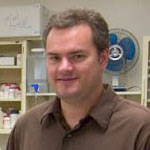
SAN ANTONIO (Jan. 14, 2011) — The kidney is made up of roughly 1 million working units called nephrons. These basic structural units remove waste products from the blood, recycle some substances to be reused and eliminate what is left as urine. The end segment of nephrons, called the distal nephron, helps set blood pressure by controlling the amount of sodium in our blood.
Today scientists at the UT Health Science Center San Antonio reported how this essential function of the distal nephron is regulated. They demonstrated that sodium handling by the distal nephron is under the control of a local regulatory system.
Loss or dysfunction of this system leads to hypertension resulting from improper salt retention by the kidneys, the scientists found in mouse studies.
“These studies provide the first unequivocal evidence of a blood pressure control system in the distal nephron of the kidney,” said senior author James Stockand, Ph.D., professor of physiology at the Health Science Center. “It turns out control of sodium re-absorption by this system is as important to normal blood pressure regulation as is a better-understood system, called the renin-angiotensin-aldosterone system, which works outside the kidney.”
Many medications that treat high blood pressure target salt handling in the kidney. “Our work identifies a possible new therapeutic target,” Dr. Stockand said.
The research was funded by the U.S. National Institutes of Health and American Heart Association and included colleagues at the University of Southern California. The findings are in the Jan. 14 issue of the Journal of Biological Chemistry.
The University of Texas Health Science Center at San Antonio, one of the country’s leading health sciences universities, ranks in the top 3 percent of all institutions worldwide receiving National Institutes of Health (NIH) funding. Research and other sponsored program activity totaled a record $259 million in fiscal year 2009. The university’s schools of medicine, nursing, dentistry, health professions and graduate biomedical sciences have produced approximately 26,000 graduates. The $744 million operating budget supports eight campuses in San Antonio, Laredo, Harlingen and Edinburg. For more information on the many ways “We make lives better®,” visit www.uthscsa.edu.

